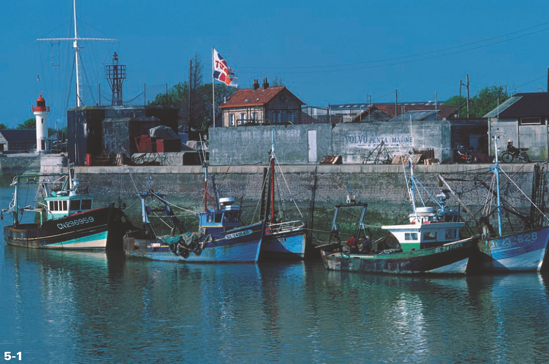Chapter 5. CAPTURING LIGHT
THE QUALITY OF LIGHT
THE DIRECTION OF LIGHT
THE INTENSITY OF LIGHT
HARNESSING SUNLIGHT
When composing a photograph, you do more than arrange the elements of design in the scene, determine the depth of field you want to include in your frame, and decide whether you want the subject of your photo to appear frozen or blurred. You also decide what type of light you want to capture. For example, you might choose to record the existing light (and the resulting shadows) in the scene before you as shown in 5-1; you also might decide to alter and manipulate the existing light to create an effect. A third option is to create your own light source, placing it where you want. In this chapter, you learn how the various qualities of light, combined with the direction and intensity of the light, can be used to shape your images. But, rather than offering a treatise on the types of artificial lighting tools available to you — flashes, spots, soft boxes, and so on — this chapter discusses ambient light in more general terms.

Figure 5-1. Noon sun lights up this harbor in Honfleur, France (85mm, ISO 100, f/16 at 1/125 second).
THE QUALITY OF LIGHT
When assessing the lighting conditions for a shoot, ask yourself: What does the light feel like? Is it hard or soft? Or, put another way, is it crisp or diffuse? Both types of light — hard and soft — create their own unique effect or mood. ...
Get Composition Photo Workshop now with the O’Reilly learning platform.
O’Reilly members experience books, live events, courses curated by job role, and more from O’Reilly and nearly 200 top publishers.

